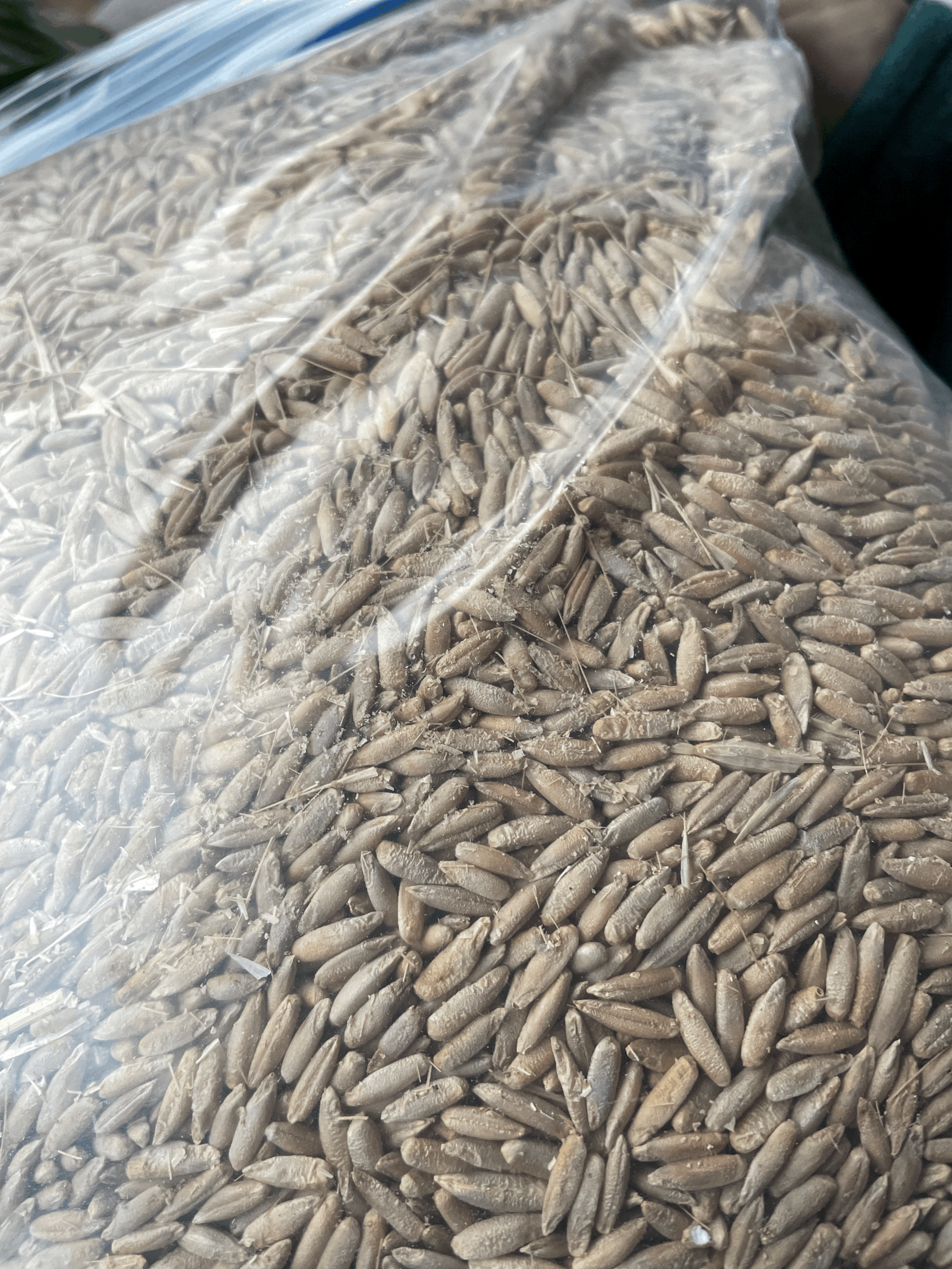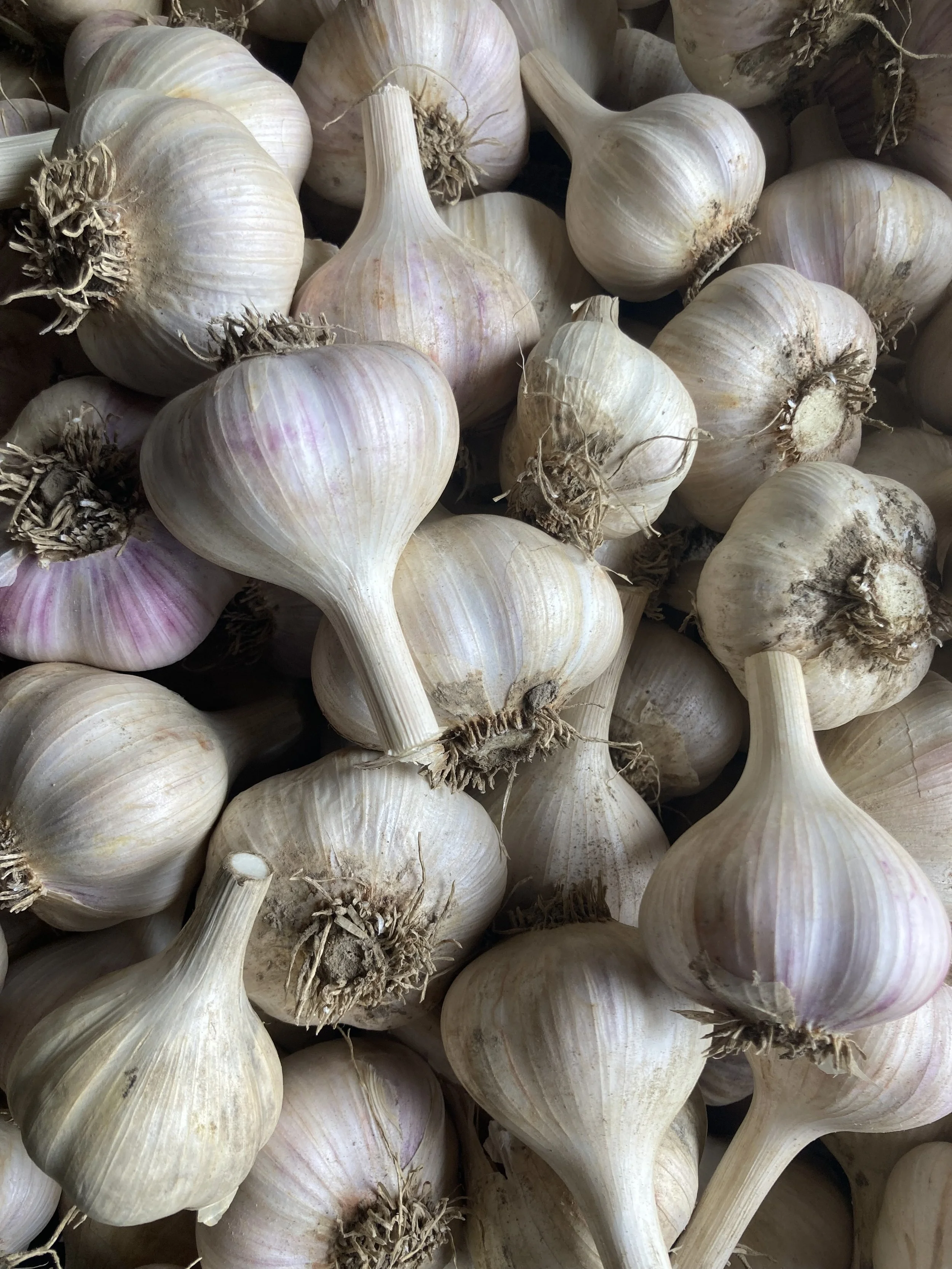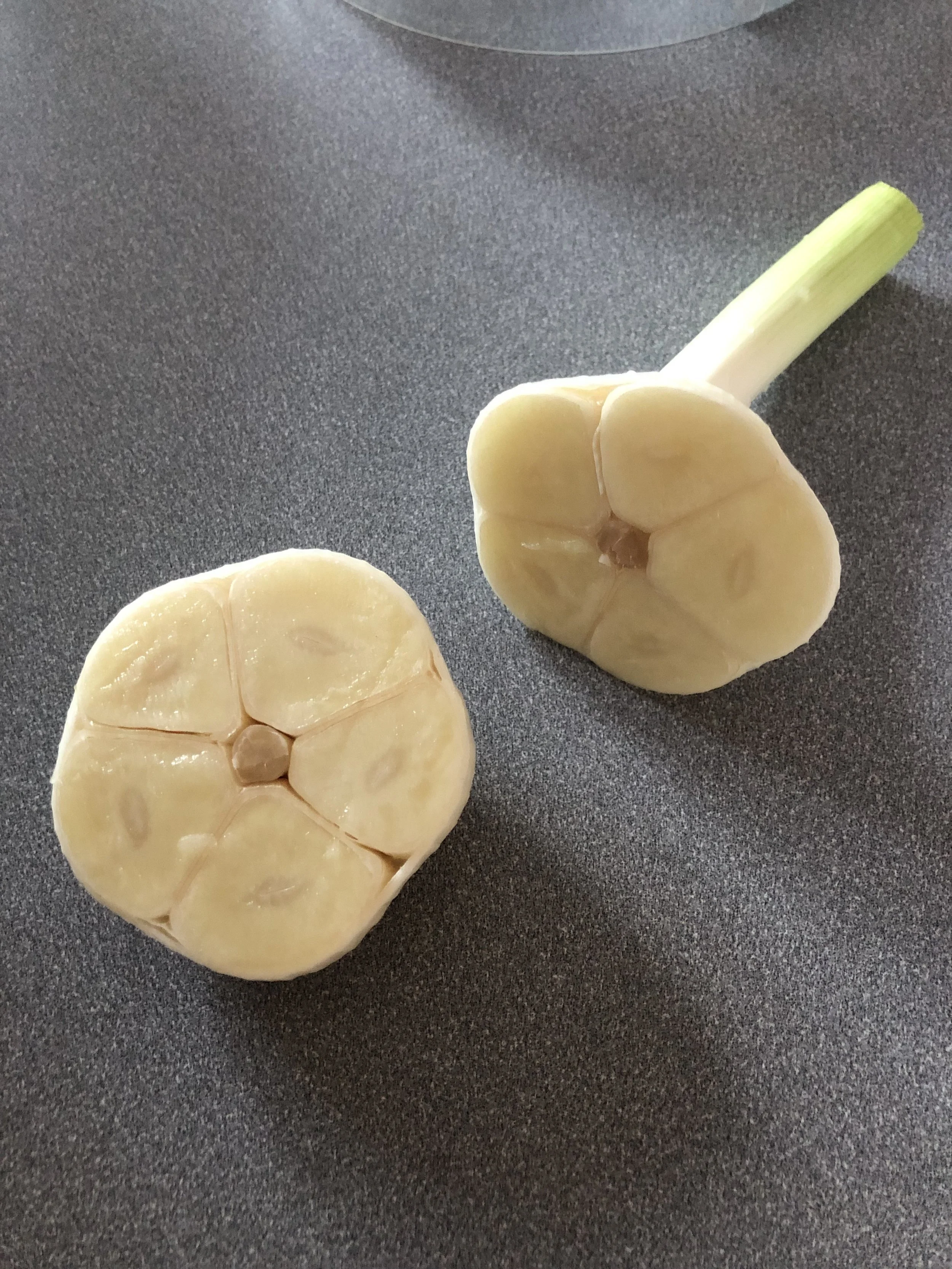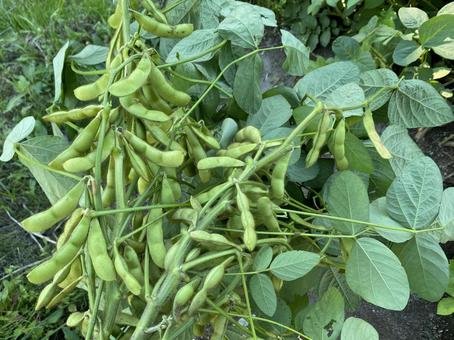Sangaste Rye
Secale cereale
Now considered a high quality landrace variety appropriate for gardens on and around Cape Ann, Massachusetts. Purple and green hues on very large, drooping, heavy seed heads. Kernels are a bit larger, longer, and more pale-gold than other varieties. Reaches 6-7ft tall. 300+/- days to maturity.
Growing conditions: Prefers well draining soil, but can tolerate variety of conditions. Extremely drought tolerant. Growing as much above the soil as below, thus deserving its reputation as an excellent soil builder.
Sowing instructions: Plant in mid-late September for harvest following July-August.
Stewardship chain: Original seed stock purchased in 2021 from Carla Shafer through Seed Savers Exchange. Carla’s original seed stock came from John Sherck who received it from an Estonian friend. Grown by Andrew Dixon of Here and There Grain Project at Alprilla Farm in Essex, MA.
Minimum 50 seeds per packet for 2024 growing season. 100% germination rate.
Secale cereale
Now considered a high quality landrace variety appropriate for gardens on and around Cape Ann, Massachusetts. Purple and green hues on very large, drooping, heavy seed heads. Kernels are a bit larger, longer, and more pale-gold than other varieties. Reaches 6-7ft tall. 300+/- days to maturity.
Growing conditions: Prefers well draining soil, but can tolerate variety of conditions. Extremely drought tolerant. Growing as much above the soil as below, thus deserving its reputation as an excellent soil builder.
Sowing instructions: Plant in mid-late September for harvest following July-August.
Stewardship chain: Original seed stock purchased in 2021 from Carla Shafer through Seed Savers Exchange. Carla’s original seed stock came from John Sherck who received it from an Estonian friend. Grown by Andrew Dixon of Here and There Grain Project at Alprilla Farm in Essex, MA.
Minimum 50 seeds per packet for 2024 growing season. 100% germination rate.
Secale cereale
Now considered a high quality landrace variety appropriate for gardens on and around Cape Ann, Massachusetts. Purple and green hues on very large, drooping, heavy seed heads. Kernels are a bit larger, longer, and more pale-gold than other varieties. Reaches 6-7ft tall. 300+/- days to maturity.
Growing conditions: Prefers well draining soil, but can tolerate variety of conditions. Extremely drought tolerant. Growing as much above the soil as below, thus deserving its reputation as an excellent soil builder.
Sowing instructions: Plant in mid-late September for harvest following July-August.
Stewardship chain: Original seed stock purchased in 2021 from Carla Shafer through Seed Savers Exchange. Carla’s original seed stock came from John Sherck who received it from an Estonian friend. Grown by Andrew Dixon of Here and There Grain Project at Alprilla Farm in Essex, MA.
Minimum 50 seeds per packet for 2024 growing season. 100% germination rate.
More from Andrew on this crop: Sangaste rye is a stunner. In early July, you can walk through its towering canopy where some plants reach as high as 10 feet tall before they dry down and droop. Breads made with Sangaste rye are silky and golden. The rye kernels stand out visually as compared to other varieties of cultivated rye, being longer and lighter in color. More comparative baking studies are needed.
Sangaste is easy to thresh—the berries cling loosely to the spike. If you are interested in using the straw for crafting, Sangaste rye is prolific. The straw is prized by crafters, used for weaving, basketmaking, hat making, and originally thatch roof making.
I have learned of some farmers planting sangaste rye as an overstory crop in prairie restoration projects, using a high seeding rate (100 lb/ac.) to strike a balance between early season weed smothering/suppression while yielding a harvestable human-consumable crop in mid-summer, leaving time for the desirable late-season grasses to take off in the summer heat.
Rye has been grown in the Northeast since the arrival of early colonizers who, after several years of crop loss while growing primarily wheat, shifted to growing more rye because it is the more reliable winter cereal grain. Rye is well suited for the climate of the Northeast; it saw periods of increased growth as influxes of immigrants from Eastern and Northern Europe arrived. The interest in growing cereal rye for grain to be sold as cover crop seed, or to other value-added markets (distillers and bakers), has once again increased considerably across the Northeast region in recent years.
Sangaste rye is currently the oldest cultivated variety of rye, dating back to the breeding of landrace ryes completed by the “Count of Rye,” Friedrich Georg Magnus von Berg in 1875, Estonia, at the Sangaste Manor. In 1920, the first Estonian state research institution, the Jõgeva Plant Breeding Station was established and in 1926 based on the results of tests comparing regional varieties of rye, it was suggested that ‘Sangaste’ was the more cold-tolerant, high-yielding variety, ushering in several decades in Estonia where ‘Sangaste’ was occupying more than half of the rye production area.
Dr. Heather Darby, UVM Extension Agronomist, and the Northwest Crop and Soils program began including Sangaste rye in their rye variety trials in 2021. These trials should be monitored over the coming years and reviewed when selecting your variety of rye.
In the United States, rye cultivation has been primarily for use as a cover crop, varieties known for their culinary uses have longer histories in Europe. Sangaste rye is known for its baking and distilling properties. In Estonia, Sangaste rye vodka is popular.













